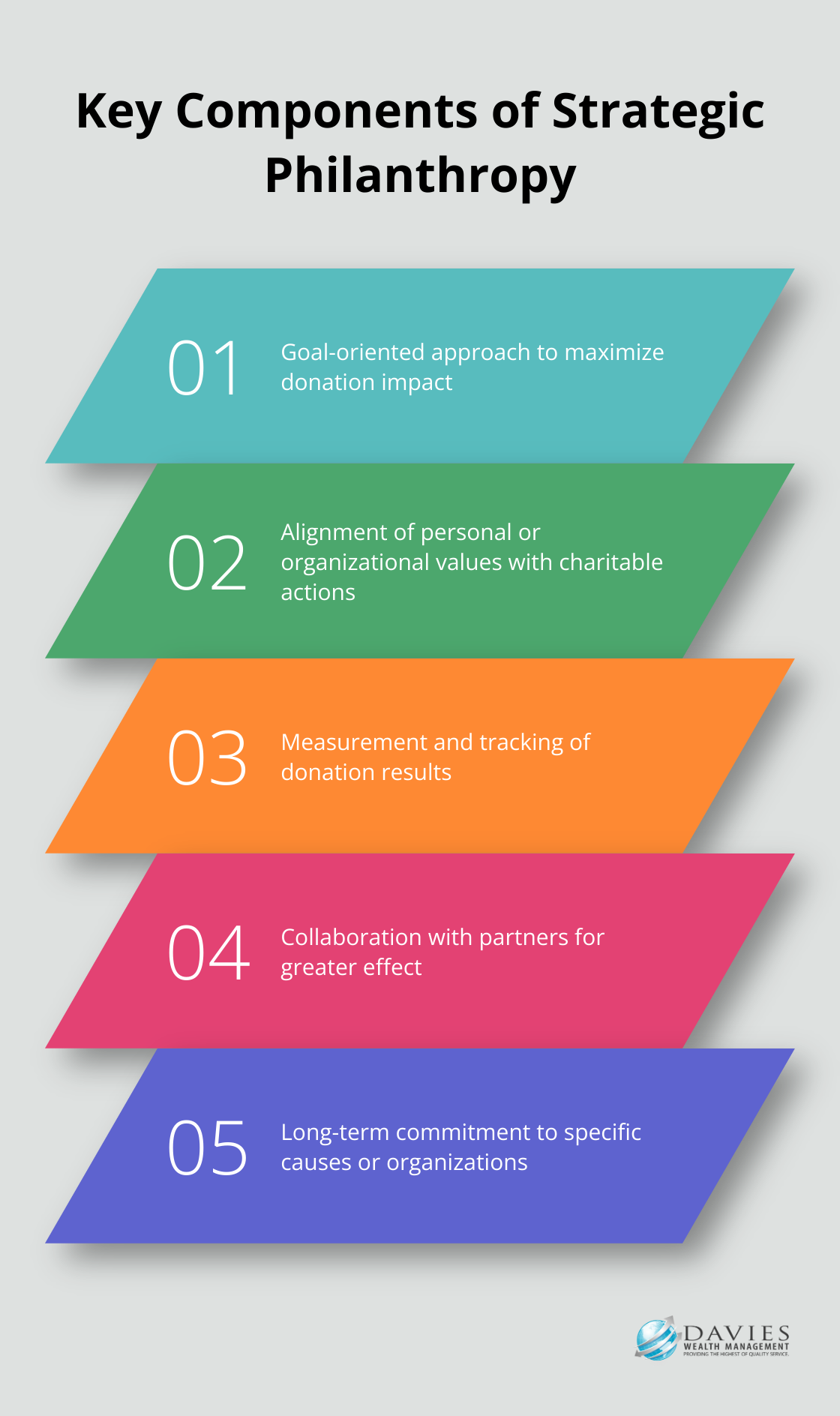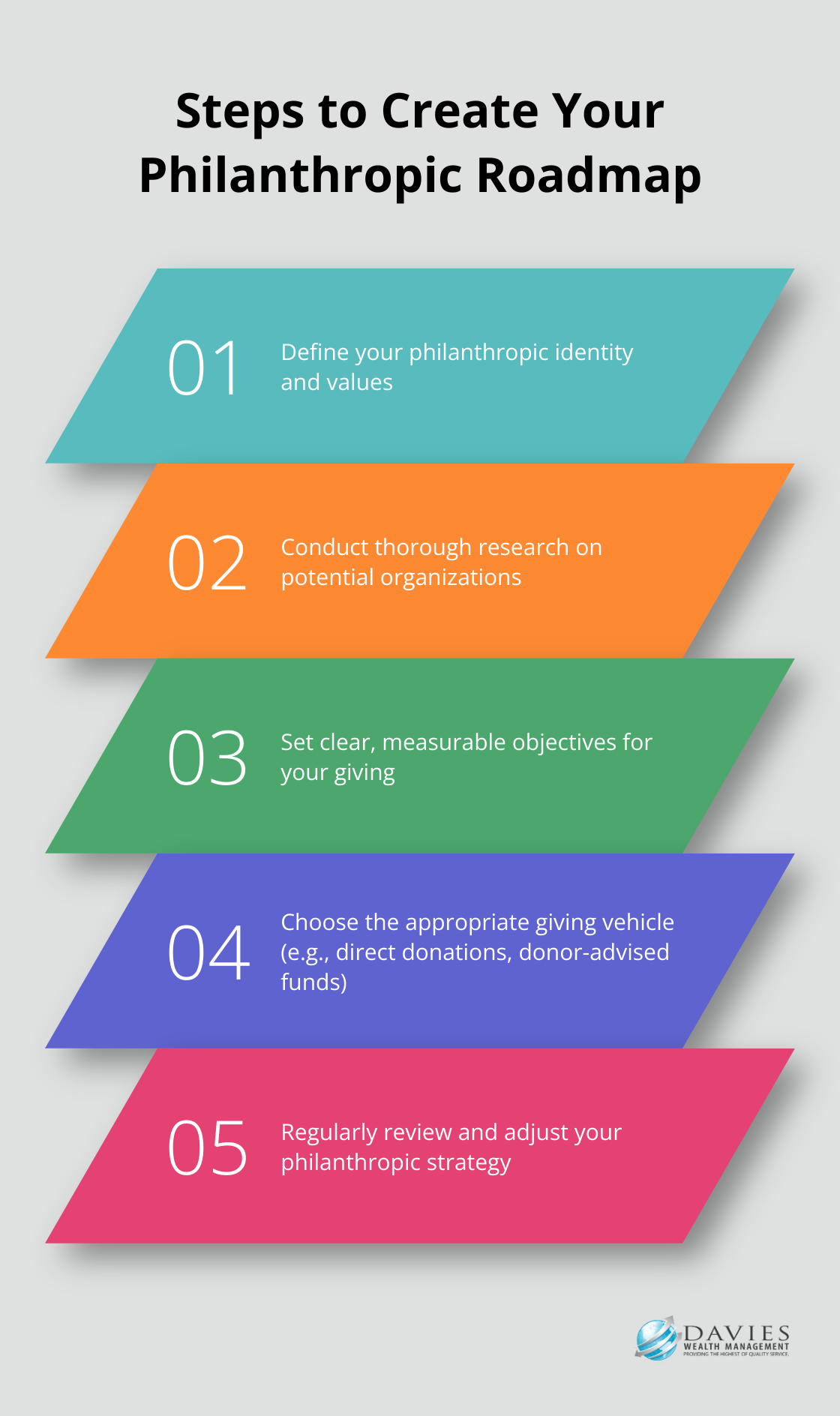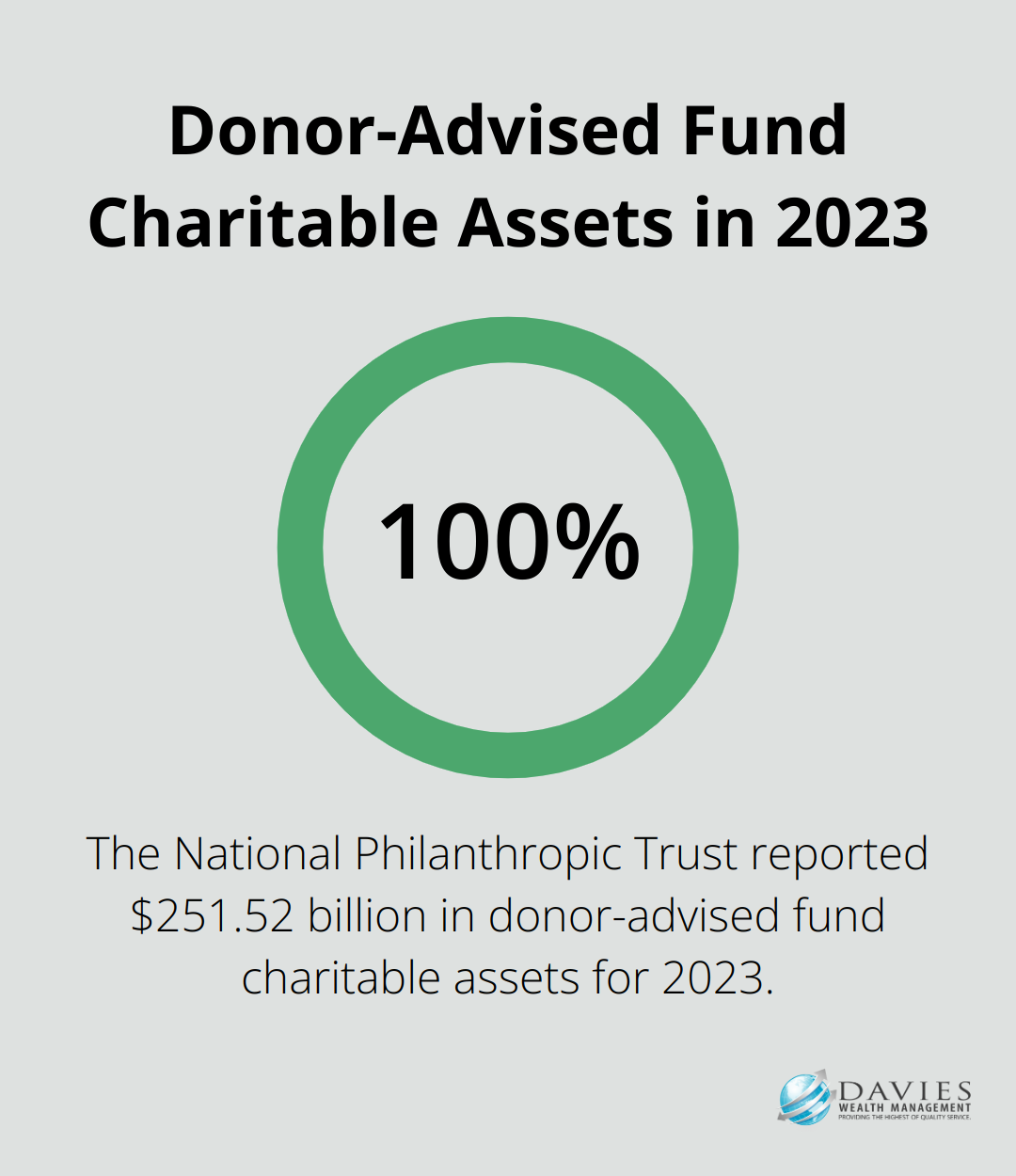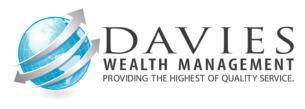At Davies Wealth Management, we believe in the power of strategic giving to create lasting change. Philanthropic planning goes beyond simple donations, focusing on maximizing impact through thoughtful and purposeful charitable contributions.
In this blog post, we’ll explore how to develop and implement a strategic approach to philanthropy that aligns with your values and goals. We’ll also discuss methods for measuring and enhancing the effectiveness of your charitable efforts.
What Is Strategic Philanthropy?
Strategic philanthropy represents a thoughtful, goal-oriented approach to charitable giving that maximizes the impact of donations. At Davies Wealth Management, we’ve observed how this method transforms both the giver’s experience and the outcomes for beneficiaries.
The Evolution of Giving
Traditional giving often involves sporadic donations to various causes without a clear long-term plan. This approach can limit the overall impact of charitable efforts. Strategic philanthropy, however, involves allocating funding to charitable work according to a concrete, overarching strategy in pursuit of specific goals.
Aligning Values with Action
A key advantage of strategic philanthropy is the alignment of personal or organizational values with charitable actions. For example, if education is a core value, a strategic approach might involve researching educational inequalities in your community and supporting programs that address these gaps effectively.
Measuring and Maximizing Impact
Strategic philanthropists don’t just give; they track the results of their donations. This might involve setting specific goals and then working with organizations to measure progress over time. Measuring impact can include measures such as the number of people trained, the number of programs implemented, and the number of resources invested.
Collaboration for Greater Effect
Another hallmark of strategic philanthropy is collaboration. By partnering with other donors, nonprofits, and even businesses, strategic philanthropists can pool resources and expertise to tackle larger, more complex problems. The Bill and Melinda Gates Foundation exemplifies this approach, often partnering with governments and other organizations to address global health challenges.

Long-term Commitment
Strategic philanthropy often involves a long-term commitment to specific causes or organizations. This sustained support allows for more significant, systemic changes rather than short-term fixes. The Edna McConnell Clark Foundation spent years supporting youth development programs, allowing these organizations to scale their impact over time.
Davies Wealth Management helps clients develop philanthropic strategies that align with their values and financial goals. Whether you’re a professional athlete looking to give back to your community or a business owner wanting to make a lasting impact, strategic philanthropy can help you maximize the effect of your charitable efforts. As we move forward, let’s explore how to develop a strategic philanthropic plan that resonates with your personal mission and values.
How to Create Your Philanthropic Roadmap
Define Your Philanthropic Identity
The first step in developing your philanthropic roadmap requires clarification of your values and goals. Ask yourself: What issues concern you most? What changes do you want to see in the world? Your answers will form the foundation of your giving strategy.
For instance, if education ignites your passion, you might focus on improving access to quality schooling in underserved communities. If environmental conservation tops your priority list, you could target initiatives that combat climate change or protect endangered species.
Strategic philanthropic planning involves defining the boundaries around what you are willing to give in service of your philanthropic goals. Give careful consideration to your own expectations and tolerance for risk.
Conduct Thorough Research
After you identify your focus areas, dedicate time to in-depth research. Look for organizations that align with your mission and demonstrate a track record of success. Websites like Charity Navigator and GuideStar offer valuable information on nonprofits’ financial health and program effectiveness.
Don’t hesitate to contact organizations that interest you directly. Many nonprofits willingly provide detailed information about their work and impact to potential donors.
Set Clear Objectives
Effective philanthropy demands clear, measurable goals. Instead of a vague aim like “help the homeless,” consider more specific objectives such as “support programs that provide job training and placement services for 100 homeless individuals in our city over the next year.”
These concrete goals allow you to track progress and adjust your strategy as needed. They also help you communicate your intentions clearly to the organizations you support.
Choose Your Giving Vehicle
The method you use to give can significantly impact your philanthropy’s effectiveness. Direct donations offer simplicity and immediate impact. Donor-advised funds can help you convert your foundation to an account with less overhead, improved tax deductions and increased grant flexibility. Private foundations offer more control but come with greater administrative responsibilities.
Many wealth management firms help clients navigate these options, considering factors like tax implications, desired level of involvement, and long-term philanthropic goals.

Review and Adjust Your Strategy
Your philanthropic strategy isn’t set in stone. As you gain experience and see the results of your giving, you may want to refine your approach. Regular review and adjustment constitute key components of effective strategic philanthropy.
The creation of a well-crafted philanthropic roadmap marks just the beginning of your journey. The next crucial step involves implementing your plan and evaluating its effectiveness. Let’s explore how to put your strategy into action and measure its impact in the next section.
Putting Your Philanthropic Plan into Action
Set a Realistic Budget and Timeline
The first step in implementing your philanthropic strategy requires you to establish a clear budget and timeline. This isn’t about picking arbitrary numbers; it’s about aligning your financial capacity with your philanthropic goals. The National Philanthropic Trust reported that there is an estimated $251.52 billion in donor-advised fund (DAF) charitable assets for 2023. However, your budget should reflect your personal financial situation and giving goals.

Determine how much you can comfortably give without compromising your financial stability. Consider both one-time donations and recurring contributions. If you plan a major philanthropic initiative, you might want to spread your giving over several years to maximize impact and tax benefits.
Build Strong Partnerships
Effective philanthropy often involves collaboration. Reach out to nonprofit organizations that align with your mission. Don’t just write a check; engage with them. Understand their needs, challenges, and strategies. This insight will help you tailor your support more effectively.
Consider joining forces with other donors or philanthropic organizations. The Giving Pledge, created by Warren Buffett, Melinda French Gates, and Bill Gates, is an extreme example of collaborative philanthropy, but you can start on a smaller scale. Look for local giving circles or community foundations in your area.
Track and Measure Impact
Measuring the impact of your philanthropy is essential but can be challenging. Work with your chosen organizations to establish clear metrics for success. These could be quantitative (number of people served, amount of resources provided) or qualitative (stories of individual impact, community feedback).
Tools like the Impact Measurement and Management (IMM) framework can provide a structured approach to assessing philanthropic outcomes. One key step in developing an IMM framework is mapping your theory of change, which provides a coherent foundation for your measurement efforts. Meaningful change often takes time, so prepare to track progress over months or even years.
Stay Flexible and Adaptive
The philanthropic landscape constantly evolves, and so should your strategy. Regularly review your giving plan and its outcomes. Ask yourself: Are you achieving the impact you hoped for? Have new needs or opportunities emerged in your focus areas?
Prepare to adjust your approach based on what you learn. This might mean shifting your focus, changing your giving methods, or even increasing your involvement beyond financial contributions. The most effective philanthropists remain responsive to changing needs and new information.
Final Thoughts
Strategic philanthropic planning empowers individuals to create lasting, meaningful change in the world. This approach aligns values with purposeful giving, sets clear objectives, and measures impact to maximize the effectiveness of charitable efforts. It benefits both the causes supported and provides personal fulfillment for donors.
The long-term advantages of strategic philanthropy extend beyond immediate financial contributions. Donors can leave a lasting legacy and make a real difference in areas they care about deeply. Beneficiaries receive sustainable support, enabling organizations to implement long-term solutions to complex problems.
Davies Wealth Management encourages you to start or refine your philanthropic strategy today. Our team specializes in helping individuals, families, and professional athletes develop comprehensive financial strategies that include philanthropic planning. We can help you align your charitable goals with your overall financial plan, ensuring your giving is both impactful and sustainable.



Leave a Reply